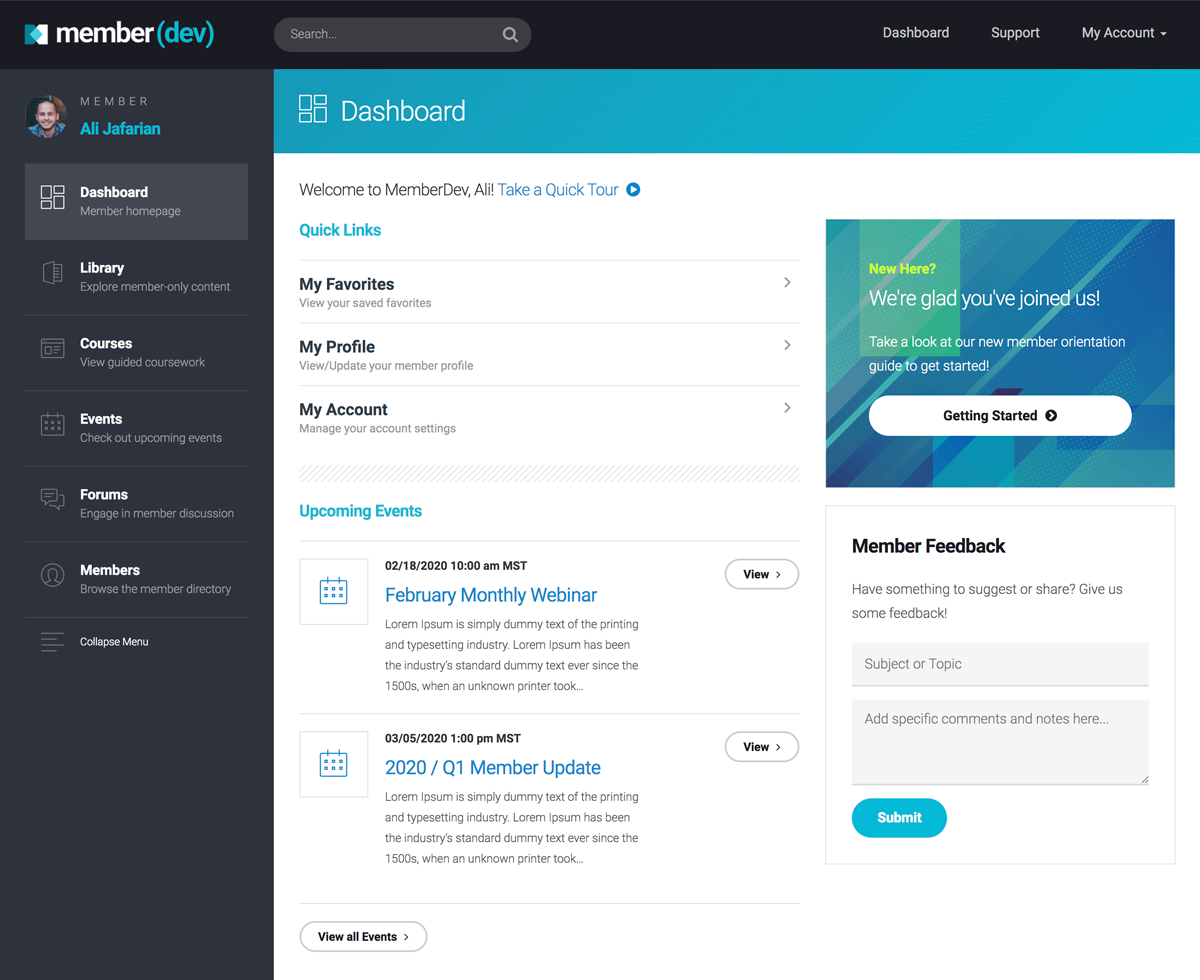Whether you love or hate the idea of paying for exclusive content, monetized subscriptions are here to stay.
But that’s not necessarily a bad thing, especially if you want to produce monetized subscription content of your own. Many times of membership-based businesses are dipping their toes into the waters of paid content with moderate (or sometimes great) success.
But it’s not for everyone, and not all businesses do it well.
Here’s a look at the basics of content monetization and what it could look like for your site.
Why Monetization is the Future of Content
If you’ve ever clicked on an article that links to a major news site only to be told you’re out of free articles, you know all about content monetization.
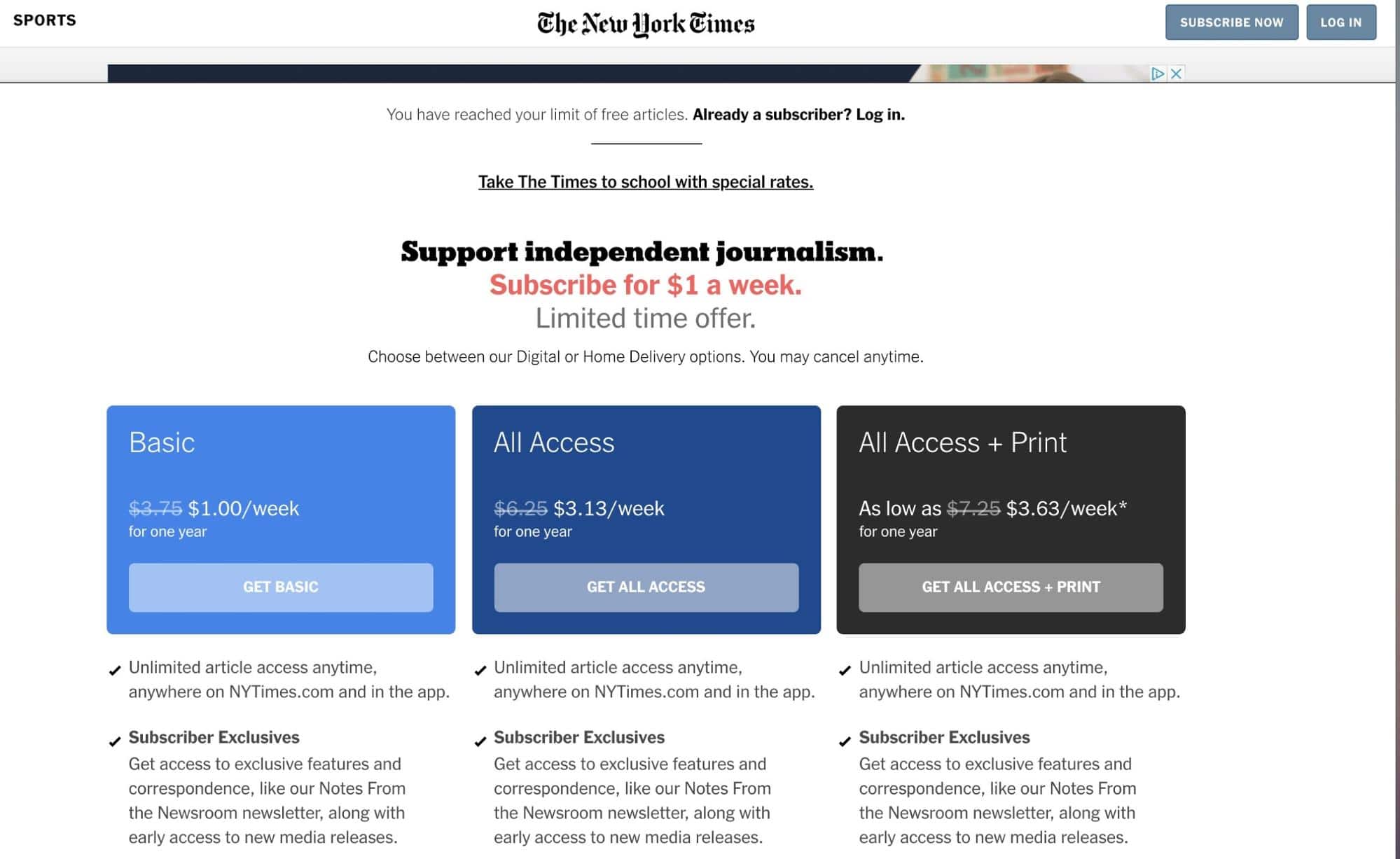
While news sites were the some of the first to adopt paid content as a solution to declining print sales, they’re not the only ones seeing benefit from it. Many subscription and membership sites have started monetizing member-exclusive content.
YouTube has YouTube Premium (formerly YouTube Red), which offers members exclusive shows, music and other content viewing experiences, like ad-free viewing.

Slate Plus gives members access to a slew of content that can’t be found anywhere else, like their Slate Academies library or their podcast, Slow Burn.
Even if you find it annoying to be hit with a paywall when browsing content the web, monetization has proven to be successful for business across the gamut.
Data from Reuters Institute found that paid subscription content was the most popular form of digital revenue, regardless of the publisher.
Video, news and other digital content such as ebooks and white papers top the list for most successful types paid content across all industries.

So it’s no surprise that many membership-based businesses (both free and paid) are looking to capitalize on the trend.
Benefits of Content Monetization
There are many benefits to content monetization that are worth considering, including:
1. Thought Leadership
While “money” might seem like the first reason to monetize, it’s not actually the most important goal for those that do it.
Monetization gives you something exclusive. It plays on FOMO (Fear of Missing Out) and can be a powerful marketing tool for growing your membership. It can also set you apart as a thought leader.
Take the subscription service Stratechery as an example.
Stratechery, a one-man operation run by founder Ben Thompson, offers free weekly content to non-members and additional analysis and exclusive daily articles through a $10 monthly subscription.
Ben initially only published free content but realized that there was a need in his niche for a deeper dive into important topics, so he launched his exclusive content membership. It resulted in huge spikes in subscriber counts (and revenue).

In an interview with Recode, he said of the process, “I felt I had insight to offer that people would find valuable.”
By focusing his writing on business strategy and technology (gleaned from his years working at Microsoft), he created a “publishing empire” rather than just a blog.
When done right, monetized content can increase both member engagement and reputation.
2. Revenue
The second benefit to monetization is, of course, money.
Having more than one stream of income will not only grow your business but also free you up to focus on projects, products or ideas that benefit your industry. (Not to mention there are multiple ways you can monetize your content, so the more streams of income, the merrier.)
When you’re not worried about driving sales, you can focus on innovation.
3. Loyalty
It’s almost always easier to retain members than it is to find new ones. When members have a sense of “buy-in,” they’re more likely to stay invested in your brand.
If you’re worried that no one will subscribe to your content, go back and read Ben’s article about Stratechery. It proves that people will absolutely pay for value.
The trick is, don’t monetize your fluff. If you offer real value and you’ll reap loyalty.
Of course, you may be asking yourself, “But will it work for me?”
The good news is that yes, you probably can monetize your content (without looking desperate and losing subscribers), because there are plenty of ways to do it.
Types of Content That Can Be Monetized
So what types of premium content can you produce?
Video, news and digital content (white papers, etc.) seem to do the best as far as paid subscriptions go.
What that looks like specifically for your business will vary depending on your niche, brand, audience interest and motivation, but there are a few specific examples you might consider:
- Member-only blog posts — If you’re already creating free content, considering creating some exclusive posts that are accessible for paying members only, a la Slate Plus (or almost any news site you see nowadays — yes, paywall can be annoying sometimes, but they do work).
- Podcasts — Podcast fans are incredibly loyal, and the medium is growing in popularity. Most listeners are probably already subscribed to paid podcasts, so if your show has something of added value for them, there’s a good chance they will buy in.
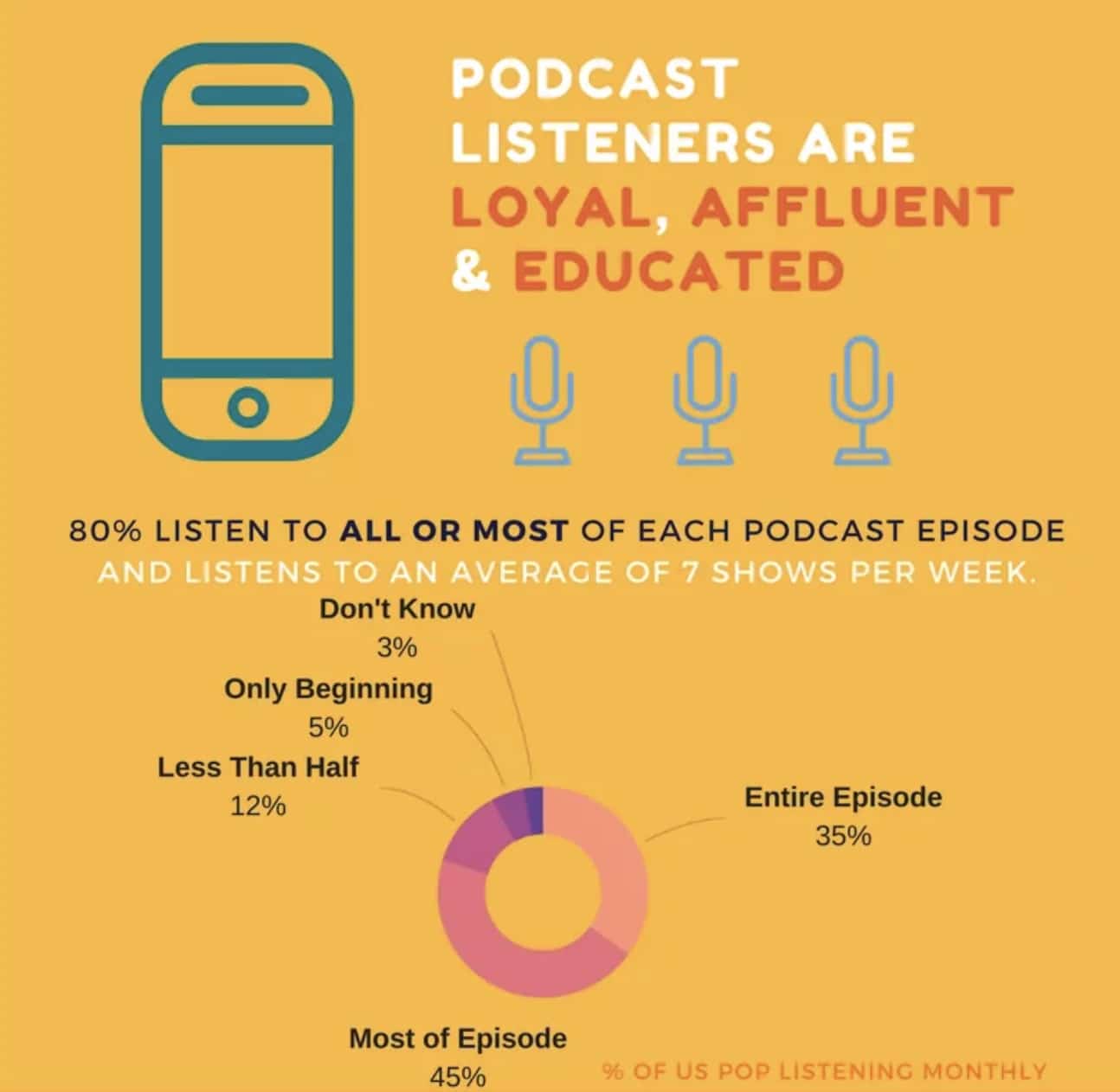
- Newsletters — Many subscription sites release newsletters announcing their latest content, and you may be one of them already. But many sites are seeing success with newsletters that contain more exclusive content. This includes newsletters that aren’t linked back to any specific business, like Hustle (which boasts over half a million subscribers) or theSkimm.
- Online courses — Online courses are convenient, affordable and easy to access. Some membership sites, like Lynda.com or Coursera, build their entire subscription services around offering online courses. But even if you just have one or two courses available for your members, monetization can be extremely lucrative.
- White papers, ebooks & research — If you’ve spent any amount of time creating a research-based white paper or ebook, don’t hesitate to monetize it. If it’s worthwhile for your industry, someone will pay to read it.
The good news is that you can create any or all of the above if you want. Not all of it has to be gated, either. You could create some free, some paid, depending on what you think is best for your audience.
The key is to make sure that your content has enough value that it doesn’t look like a money-grab. If you’re going to paywall, make sure it’s worth the price.
How to “Paywall” Your Subscription Content
There are a few different ways you can paywall (gate) your content for members without turning them off (because not everyone likes the idea of a paywall, obviously).
“Soft” paywalls use a form of metering where non-paying members or visitors might be allowed access to some of your content, with paying members getting access to all of it.
News sites like to have soft paywalls — you get 10 articles for free but anything after that requires a paid subscription. This might work for online courses or podcasts, especially. Give access to one free course or podcast a month but gate the rest for paying members.
Another version of this is the micropayment paywall, where you can access parts of content for free but you have to paid to get the full thing. Some sites let you read the intro to an article but gate the rest.
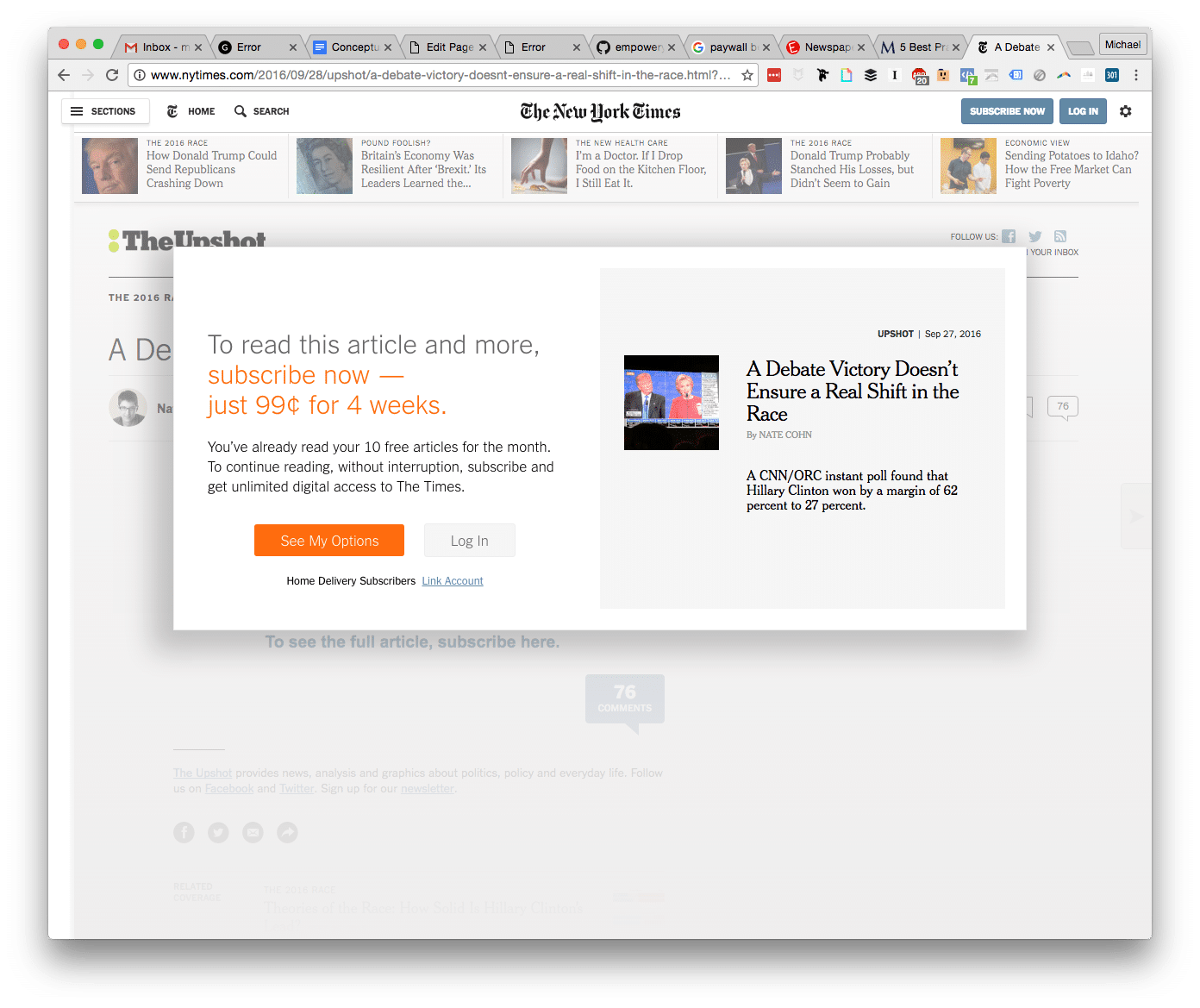
This works well if your content is particularly compelling because it offers the hook for free. And micro-payments don’t have to be expensive (less than $1 in some cases), which gives people the opportunity to access gated content without paying $10+ every month to read it.
There are also soft paywall alternatives, like Google Consumer Surveys, which add interactive surveys that users can answer in place of paying for content.
“Hard” paywalls, on the other hand, gate content for everyone. This type of paywall favors newsletters, courses or white papers, but any content can be made exclusive for members.
Hard paywalls often have a harder initial buy-in, but if someone is already paying for a membership and they get free exclusive content on top of it, it can be an excellent way to increase member engagement and loyalty.
Important Considerations When Creating Paid Content
As you probably know, the use of paywalls or gated subscription content isn’t popular with everyone. There are probably those out there who hate the idea of having to pay for content.
So how do you work around that?
1. Consider your price point
Price should depend on the type of content you’re producing and how much effort you’re putting into it, but this is one of those instances where higher prices don’t sell better (you’re not Cartier or Mercedes-Benz).
As a general rule, a lower price point for monetized content is better. Consider the difference between even $5 and $10 — one is a cup of coffee and one is a cheap copay.
Also consider how your content offerings line up with your competitors.
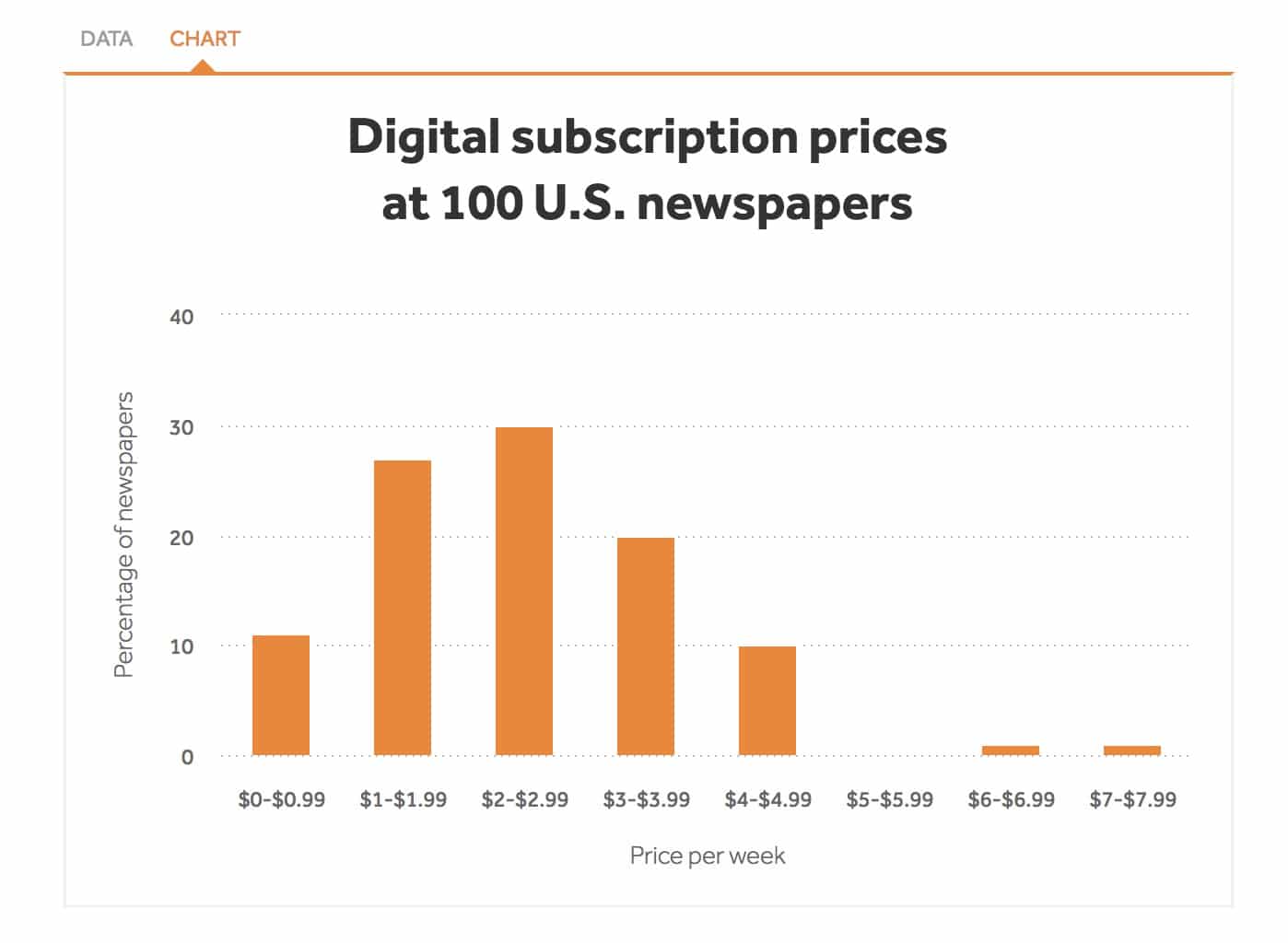
A subscription to The Atlantic is $25 per month, for example, but Time Magazine is $30 and the New York Times is less than $20. But readers might prefer one over the other for various reasons.
2. Quality
People will pay for quality, but it’s important to assess what your audience thinks “quality” means, not what you think it means.
The New York Times lost 10% of its online readership within two years of erecting a paywall the first time because subscribers were used to getting the same content for free. But sales improved once they started creating more exclusive, higher-quality content.
Consider the type of content your audience expects, what they’ve been paying (or not paying) for up until this point, and how much added value it will add to their lives.
If your premium material is perceived as a “notch above” the rest, subscribers may be more included to buy in.
3. Costs of production
There’s a big difference between creating a few extra blog posts per month or putting together an entire members-only podcast.
Effort should go into the cost factors, and it should be obvious that you’re putting in an effort to make your content great.
If you’re stuck on this aspect of content production, consider creating tiered content. Exclusive access to blog posts or white papers you’re more-or-less already producing may cost members a couple extra bucks per month, while access to your podcast may require a $10 per month additional membership.
Make sure that your effort is worth it not only for the readers but for you and your team as well.
Final Thoughts
As more businesses move to the subscription model, more opportunities for content monetization will crop up. Pay attention to trends and gauge the interest of your audience when deciding which content to monetize.
Always make sure that your content has something of value to offer readers. If you’re asking them to pay for it, then it should provide real, tangible benefit. Yes, even a blog post can do that, but it has to be a great blog post.
If you’re worried about putting up paywalls, look at what others in your industry are already doing. If there’s a precedent for it, don’t be afraid of stepping out of the box and creating a cool members-only newsletter or branching out to something new.
People love new things, and if it’s great, they’ll pay for it too.


